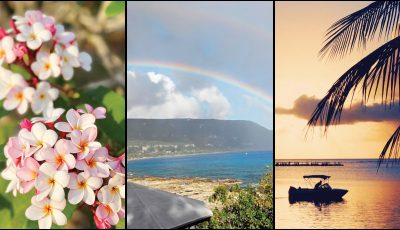Answers sought to cut wait-times
Responding to Marianas Visitors Authority concerns about long immigration wait-times at the Francisco C. Ada Saipan International Airport, the Office of Delegate Gregorio Kilili C. Sablan (Ind-MP) assured the agency that several measures are being looked at to expedite the process.
In an earlier interview, MVA had expressed belief that the long wait-time could possibly be due to the shortage of manpower at the Customs and Border Protection unit.
According to MVA, CBP officials informed them that a manpower cap was imposed on CBP by Congress, limiting the number of CBP employees for the CNMI to 20.
Sablan’s letter denied that claim.
According to the letter, dated Feb. 3, 2017, and addressed to MVA chair Marian Aldan-Pierce, Sablan said he himself has met with CBP officials in Washington, D.C. and discussed CBP resources with the Congressional Research Service.
“Both CBP and CRS report to me that the statement [MVA] asked about is not true. There is no cap set by Congress on the number of CBP officers who can be assigned to Saipan,” Sablan wrote.
“For security reasons CBP does not disclose the specific number of officers assigned at any port of entry. CBP has told me that the number [20], which has been widely reported in the media as the number of officers in the Marianas, is not accurate,” he added.
Sablan clarified in the letter that annual funding level for CBP is set by Congress and in turn limits the number of CBP officers the agency can deploy nationwide.
Sablan also added that Congress has been increasing funding for officers in recognition of the need to speed processing at ports everywhere.
“CBP allocates these funds, using a staffing model based on the number of visitors arriving at each port of entry and related factors, to determine how many officers are assigned at each location,” wrote Sablan.
Sablan did admit, that the number of officers on station is below the budgeted level.
“For that reason, screenings may have slowed and may have contributed to the concern voiced in your letter,” he said.
Sablan said that, according to the CBP itself, wait-times varied from 5 minutes to 49 minutes.
Possible solutions
Sablan also mentioned in his letter possible solutions.
“Among the ideas worth considering is managing the arrival of aircrafts so that CBP may make most efficient use of its officers. Expediting the hiring of CBP staff, offering incentives for Saipan postings, and putting more focus on local hires in the Marianas are certainly to be encouraged,” said Sablan.
Sablan believes that measures imposed on visitors prior to arrival are a viable option.
“Prescreening visitors in their home country either in person or electronically, when they schedule their travel and/or before allowing them to board, reduces wait-times.”
According to Sablan, deplaning passengers from China attempting to enter the CNMI under parole takes about 110 seconds on average to process, whereas a passenger prescreened prior to departure using the Electronic System for Travel Authorization, or ESTA, requires about 25 seconds upon arrival.
MVA has expressed budget concerns about utilizing ESTA, which was proposed by Guam Delegate Madeleine Bordallo (D-Guam).
Another means of prescreening is the presentation of a visa, which Sablan thinks could be harmful more than helpful by reducing the number of tourists who are allowed to enter the Marianas. It does, however, improve immigration lines for tourists.
Sablan said he is open to discuss the matter in person with government agencies.
“I would like to invite the Marianas Visitors Authority and other relevant parties—the Commonwealth Ports Authority, airlines, Customs and Border Protection, and others in the tourism economy—to meet with me at the Saipan congressional office in the near future to establish a common understanding of the facts and to discuss what each can do to better the visitor experience.”



























